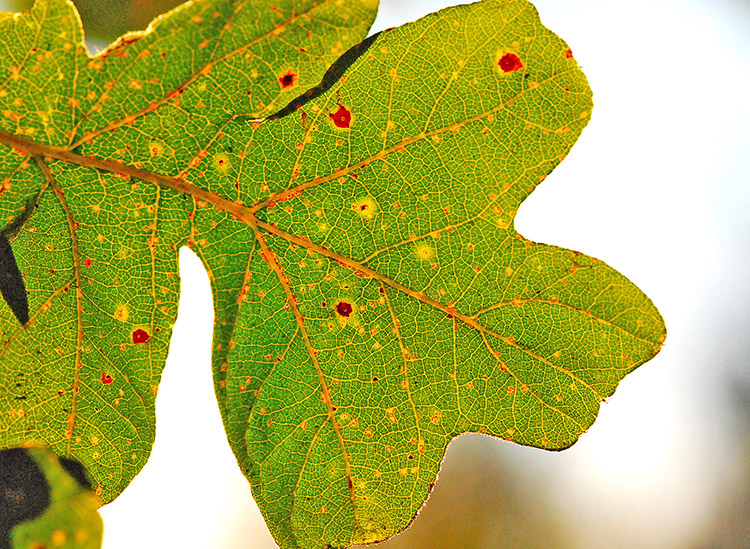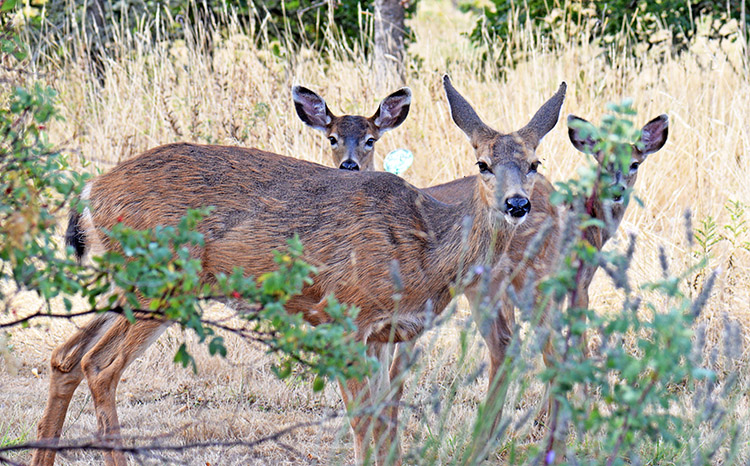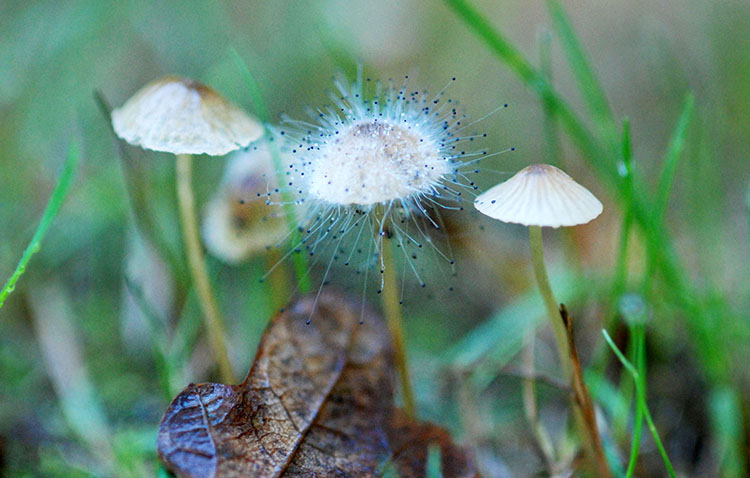Food Webs Nutrient Cycling and Energy Flow


Food Webs Outcomes
-
Describe and provide examples of producers, consumers, and decomposers.
-
Explain how energy is lost at each trophic (feeding) level.
-
Describe the role of decomposers in nutrient cycling.
Organisms can be classified based on their structures and/or based on the role they play within an ecosystem. The last webpage described taxonomic classification; this page describes functional classification.

Taxonomic Classification
This is the classification system based on structures and evolutionary relatedness.
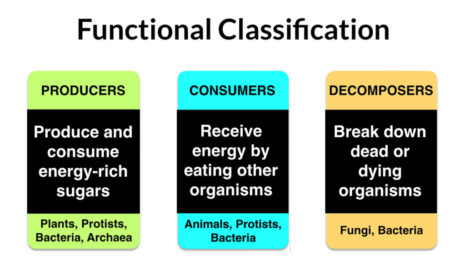
Functional Classification
This is the role an organism plays in the ecosystem, including how it relates to other species.
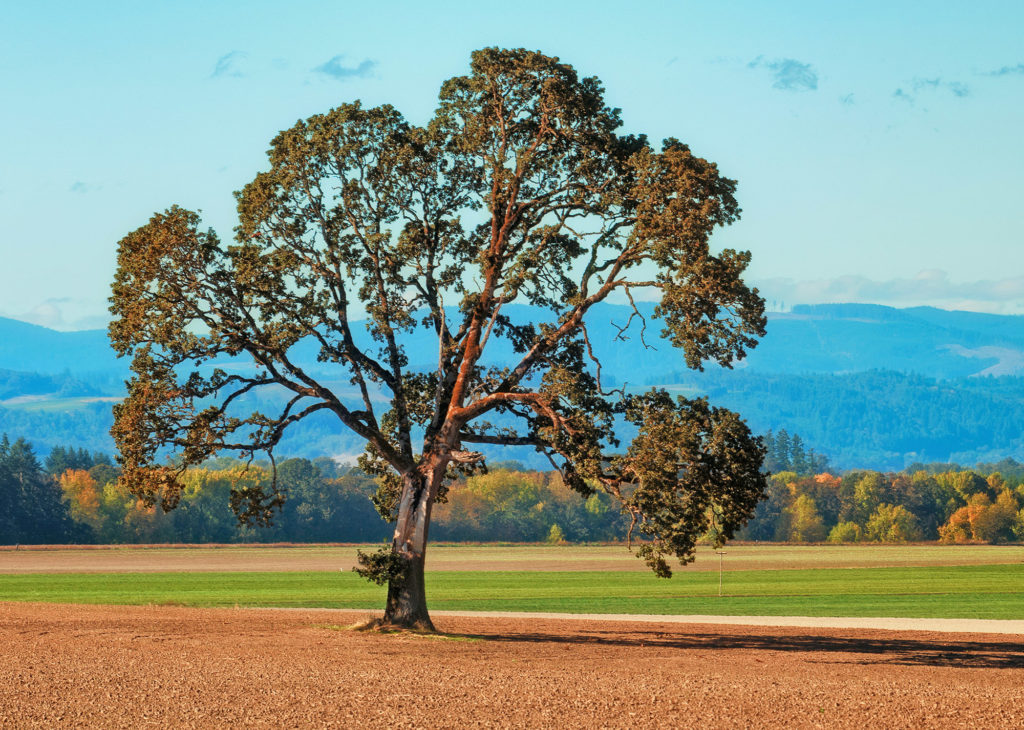
An Oregon White Oak (Quercus garryana) is taxonomically classified in Domain Eukaryota, Kingdom Plantae, Phylum Angiosperm, Class (Clade) Dicot, Order Rosids, Family Fagaceae, Genus Quercus and species garryana.
Its functional classification is producer.
Functional Groups
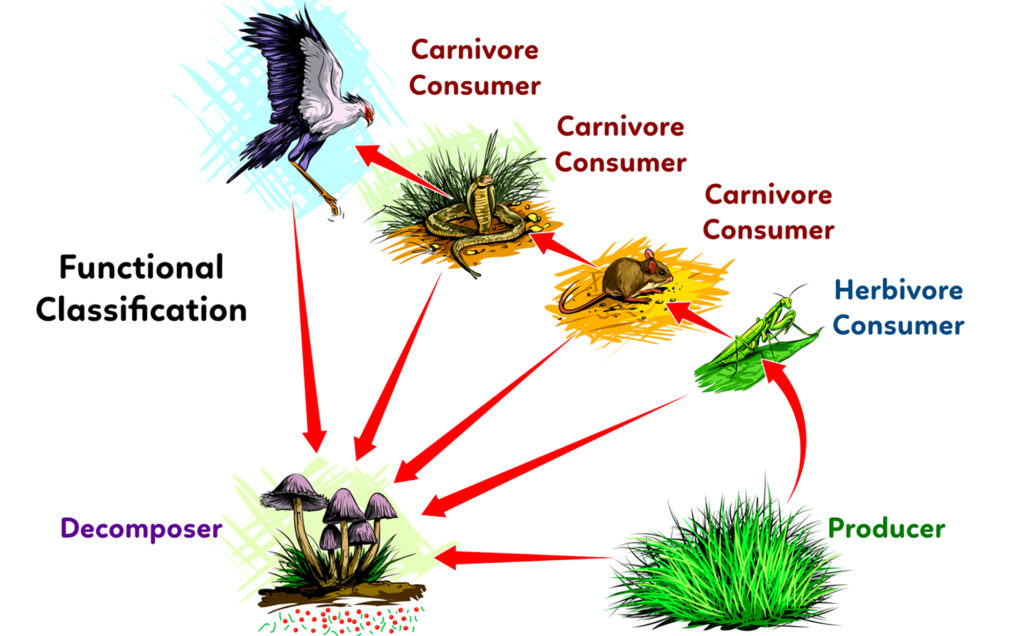
Animals need to consume other consumers for nutrients and energy:
Herbivore consumers eat producers
Carnivore consumers eat other consumers, or their recently dead remains (scavengers)
Omnivores can eat producers and consumers
Animals do not choose their functional group, they have digestive organs, feeding structures, dietary requirements, and behaviors that obligate them to eat certain foods.
Of the different consumer functional groups, which has the most potential flexibility in diet?
Answer: omnivores like humans, foxes and crows can live off different foods in a variety of habitats
Trophic (feeding) Levels

A food web, visualization of \”who eats who,\” starts by assigning trophic (feeding) levels.
Producers are the first trophic level. The herbivores that eat them are the second trophic level, and the carnivores that eat the herbivores are the third trophic level. A fox can be an omnivore; in this illustration it is simply eating rabbits as a carnivore.
This is a \”Biomass Pyramid.\” it indicates that there is a higher total mass of producers in a given area than herbivores; and more mass of herbivores than carnivores.
You may already be well aware of this: there may be a lot of grass plants in a meadow, but a smaller mass of organisms that eat the grass.
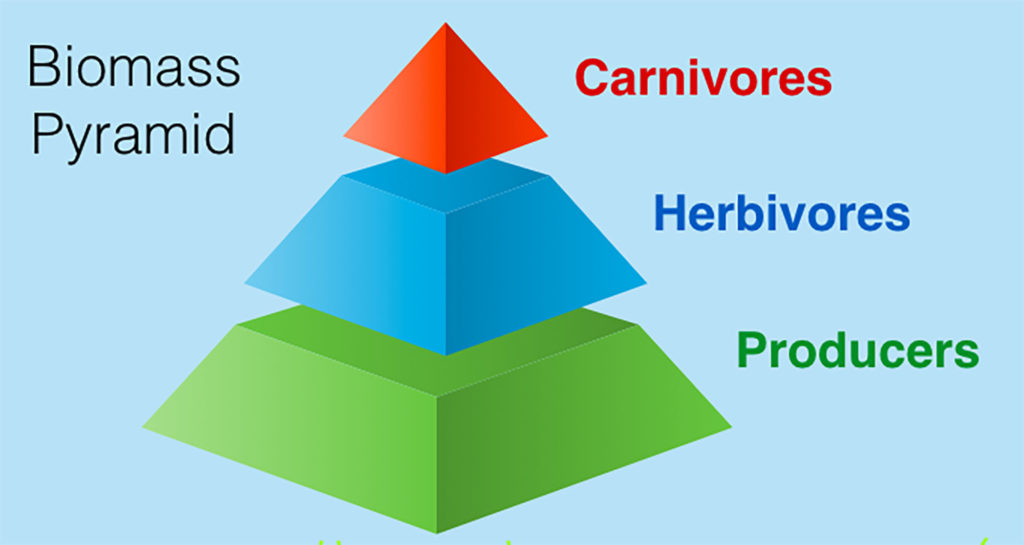
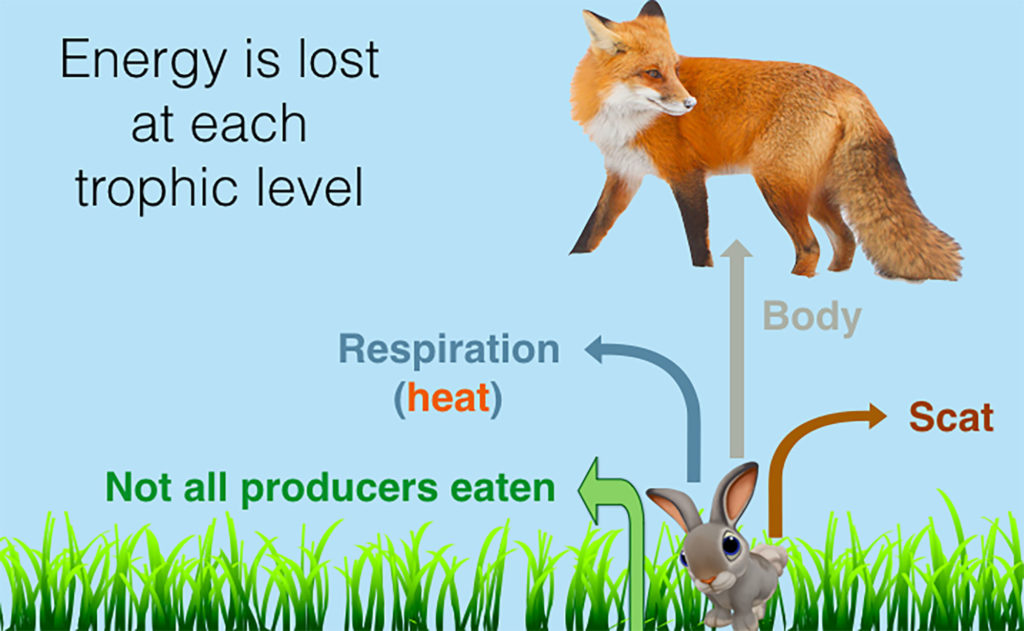
The explanation for why there is a greater mass of producers has to do with energy the producers trap not making it to the next trophic level.
Not all of the grass is eaten, some passes through the bunny, or is burned off. Little of that original grass energy is available to the fox.
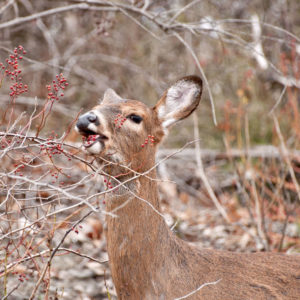
See if you can put this into your own words; why would there be a higher biomass of berry plants than biomass of deer; or a greater biomass of thistle plants than the goldfinch birds?
Why would there be a greater biomass of deer than wolves; or goldfinches than hawks?
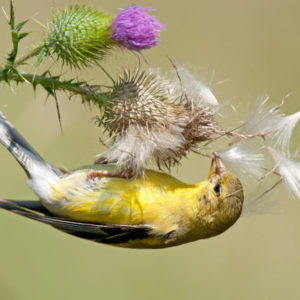
Energy Flows
In lecture we will discuss two processes: photosynthesis carried out by most producers, and respiration carried out in some form by all organisms (producers, consumers, and decomposers).
Producers convert sunlight energy into sugar molecular energy. When producers, consumers, and decomposers break down these sugars, the energy is converted to heat.
Energy is flowing through the system: entering as sunlight, traveling as sugar, and being lost as heat.

Nutrients Cycle
We continually need sunlight energy to replace the energy being lost as heat.
Nutrients are a different story.
Molecules are broken down into simpler forms by decomposers and recycled back to producers where they travel through the trophic levels over and over again.

In this video the concepts on this webpage get put together into a basic food web.
An additional group of organisms mentioned are the \”detritivore\” consumers that eat \”detritus\” (dead leaves, scat/fecal material, etc.). These include earthworms, some beetles, sowbugs, and more. We\’ll meet them next week in lecture.
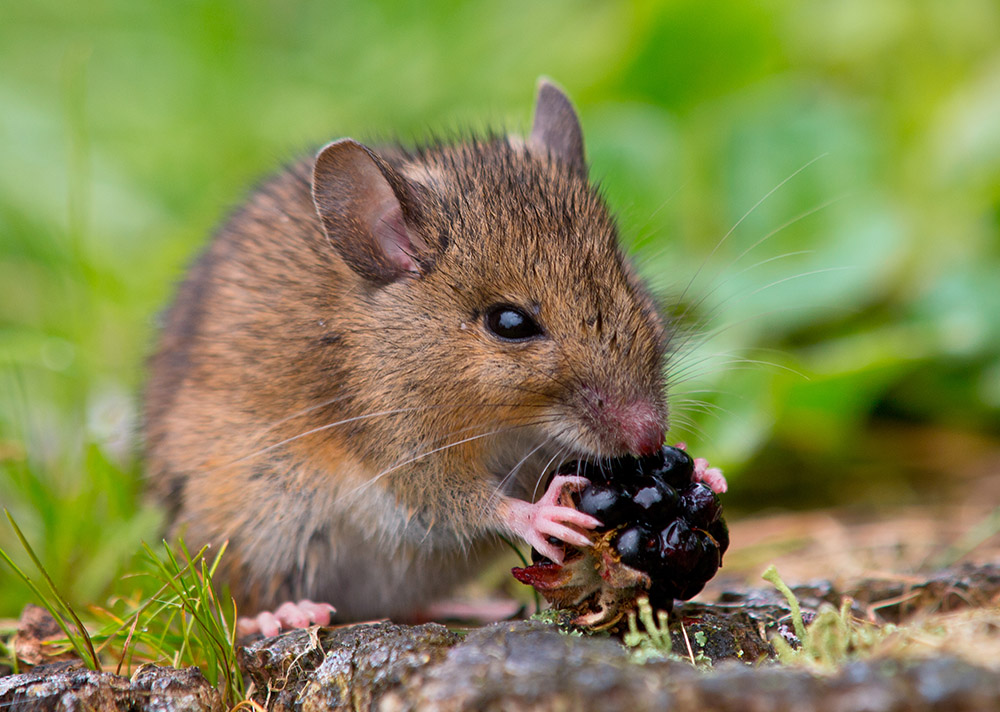
Check your knowledge. Can you:
-
describe and provide examples of producers, consumers, and decomposers?
-
explain how energy is lost at each trophic (feeding) level?
-
describe the role of decomposers in nutrient cycling?
